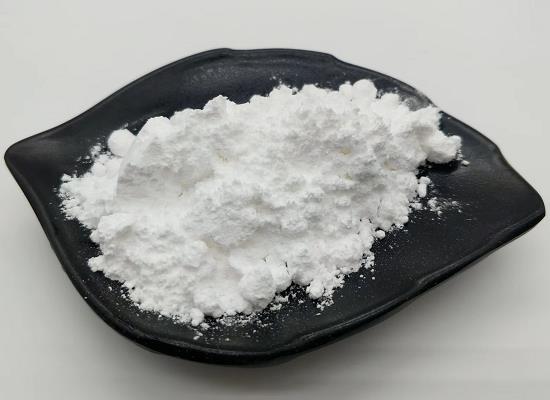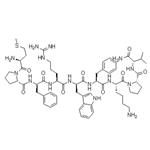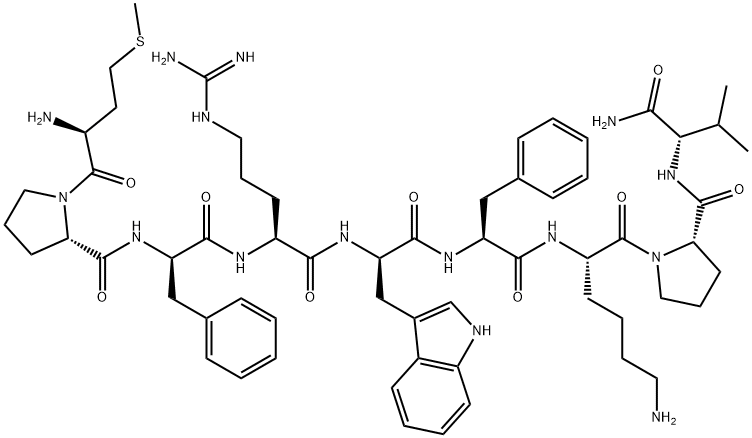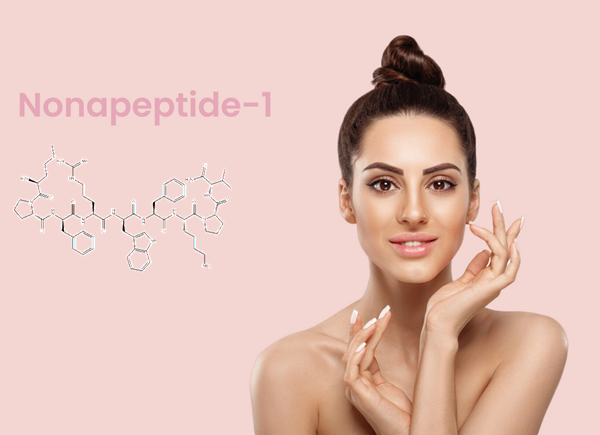Nonapeptide-1: Applications in Skin Care and its Preparation Method
General Description
Nonapeptide-1 is a synthetic biomimetic peptide that serves as an antagonist to alpha-melanocyte-stimulating hormone, effectively reducing melanin synthesis by approximately 33%. By inhibiting the enzyme tyrosinase, it addresses pigmentation issues without cytotoxicity or completely halting melanogenesis, which is vital for skin health. Formulated into skin care products, Nonapeptide-1 has shown significant results in lightening sunspots and hyperpigmentation, with users experiencing enhanced skin tone within 28 days. Its efficient preparation using the intein Wir Gp071 variant ensures high yield and purity, making it a commercially viable option for the growing demand in dermal and cosmetic applications.

Figure 1. Nonapeptide-1
Applications in Skin Care
Understanding Nonapeptide-1: A Novel Approach in Skin Care
Nonapeptide-1 is a synthetic biomimetic peptide that has emerged as a significant advancement in skin care, primarily due to its role as an antagonist of alpha-melanocyte-stimulating hormone. This innovative compound was developed through extensive screening methods that evaluated various segments of the alpha-melanocyte-stimulating hormone sequence for their capability to block interactions with specific MC1-R receptors located on melanocytes, the skin cells responsible for melanin production. Research has demonstrated that Nonapeptide-1 is the most effective peptide for this purpose, successfully inhibiting the activation of the MC1-R receptor by alpha-melanocyte-stimulating hormone. As a result, Nonapeptide-1 occupies the MC1-R receptor, leading to a remarkable reduction in melanin synthesis, specifically a decrease of approximately 33%. This mechanism highlights the peptide’s potential as a valuable tool in skin lightening without compromising skin health. 1
Mechanism of Action: Nonapeptide-1 in Melanin Regulation
The mechanism of action of Nonapeptide-1 plays a crucial role in its application as a skin care agent. By inhibiting tyrosinase, a key enzyme involved in the melanin production pathway, Nonapeptide-1 effectively disrupts the synthesis process of melanin. This inhibition reduces the overall pigmentation of the skin, making Nonapeptide-1 a distinguished candidate as a skin-lightening agent. Unlike many conventional agents, Nonapeptide-1 does not exhibit cytotoxicity, nor does it interfere with the normal functioning of melanocytes. Importantly, Nonapeptide-1 does not completely stop melanogenesis, which is essential for maintaining skin health and its natural defense against harmful ultraviolet radiation. This balanced approach allows Nonapeptide-1 to effectively manage pigmentation issues while supporting the skin’s protective mechanisms. 1
Nonapeptide-1 in Skin Care Formulations
The incorporation of Nonapeptide-1 into various skin care formulations has yielded impressive results, particularly in addressing concerns such as sunspots, freckles, and various forms of hyperpigmentation. Users of products containing Nonapeptide-1 have reported significant improvements in their skin tone, achieving a lighter and more radiant complexion with an even distribution of color. Clinical studies have shown that Nonapeptide-1 is a stable and effective ingredient, capable of significantly reversing hyperpigmentation within just 28 days of consistent application. Its ability to equalize skin tone while enhancing overall skin appearance underscores Nonapeptide-1’s potential as a transformative agent in dermatology and cosmetic science. As the quest for more effective skin care solutions continues, Nonapeptide-1 stands out as a promising innovation that prioritizes both efficacy and skin health, reflecting the evolution of modern skin care. 1
Preparation Method
Nonapeptide-1 is a significant compound that can be efficiently prepared using the intein Wir Gp071 variant. This preparation involves a recombinant expression vector that combines the intein Wir Gp071 with nonapeptide-1, allowing for the generation of a fusion protein. The process begins with the expression of this fusion protein, followed by cell disruption to release the product. Subsequently, simple intein cleavage is performed, which facilitates the separation of high-purity nonapeptide-1 from the fusion protein. The method is not only straightforward but also allows for sustainable production at large scales, making it ideal for industrial applications. The high yield and purity of nonapeptide-1 produced through this method underscore its commercial viability. Consequently, the preparation of nonapeptide-1 using intein Wir Gp071 presents an efficient and economically beneficial approach, catering to the increasing demand for high-quality nonapeptide-1 in various markets. 2
Reference
1. Nonapeptide-1. Cosmetic Ingredients and Complexes Glossary. FDA UNII: 64W45420K5.
2. Chen XP, Zhang Z, Wu Y, Zhang Y. Intein Wir Gp071 variant, coding gene in preparation of nonapeptide-1. 2023; Patent Number: CN115960851.
Related articles And Qustion
See also
Lastest Price from Nonapeptide-1 manufacturers

US $0.00/kg2025-10-24
- CAS:
- 158563-45-2
- Min. Order:
- 1kg
- Purity:
- 99%
- Supply Ability:
- 1000kg

US $500.00-500.00/kg2025-10-10
- CAS:
- 158563-45-2
- Min. Order:
- 1kg
- Purity:
- ≥99.00%
- Supply Ability:
- 1000000



